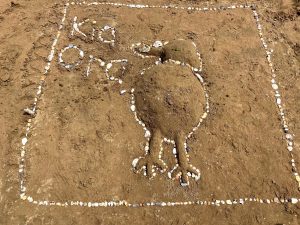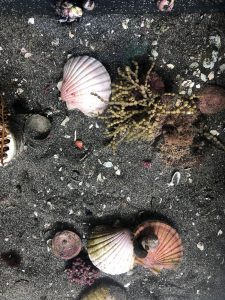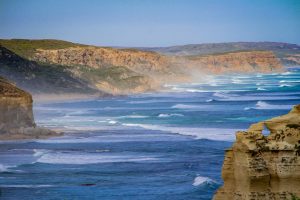Throughout our time in New Zealand and Australia we saw so much beauty— mountains, crazy geysers, fields of kangaroos, and rainforests. But while exploring all of these incredible places, the ocean was always the central force pulling me closer to uncover its many mysterious layers. This connection to the sea was formed by many special moments frolicking in the waves. One of these moments was a lunch stop on our way to Paihia, New Zealand. We groggily disembarked from the bus and were transported into a magical seaside adventure. The waves playfully swooped us up and down and the sandy bottom was littered with pink shells and sand dollar treasures. The sea brought out our childlike energy and swept away our facades, revealing more genuine versions of ourselves.

In Paihia, the ocean continued to connect us to others. A group of us were swimming after a busy morning celebrating Waitangi Day and we befriended a couple of Kiwi children playing at the beach. The kids helped us create a kiwi bird decorated with shells as I addressed the little boy’s most pressing quandary: “Why do they put salt in the sea?” This experience reminded me that the ocean is a powerful force of environmental inspiration and curiosity that entices people of all ages. And it inspires me to use marine education as a way of connecting children to nature and instilling in them a desire to protect the environment.

We saw this method of inspiring conservation a few days later while snorkeling at Goat Island Marine Reserve. Before getting into the water, we visited the Goat Island Marine Discovery Center for some marine biology lectures. We learned about the conservation struggles that the marine reserve is facing, primarily because of fisheries just outside the limits of the reserve. But another important part of this visit was meeting people with jobs in marine biology, which helped us get a better idea of what it looks like to be a marine biologist. I was able to picture myself doing marine research and ensuring that tourists experience both the beauty of the marine reserve and understand the conservation issues facing the ecosystem. It is easy to see many environmental jobs as consisting of one main duty, but in reality most environmental jobs are very interdisciplinary and involve aspects of education, policy/management, and science.

Towards the end of our time in New Zealand we had another chance to better understand marine biology opportunities by touring the Portobello Marine Laboratory in Dunedin. Apart from dissecting some squids, we got a tour of the lab with explanations from PhD students and professors about how their research contributes to marine conservation efforts. This helped me see how my growing passion for marine science can be shaped into a meaningful career. In this way, our time in Australia and New Zealand didn’t just bring me closer to the ocean, it also gave me a better understanding of where I can go from here and where I want to end up. Not everyone on our trip wants to be a marine biologist now, but we all found our own special interests and got a glimpse into the lives of many inspiring practitioners. I will always be grateful for this life-changing experience that I shared with such a special group of people.

– Ivy Arden